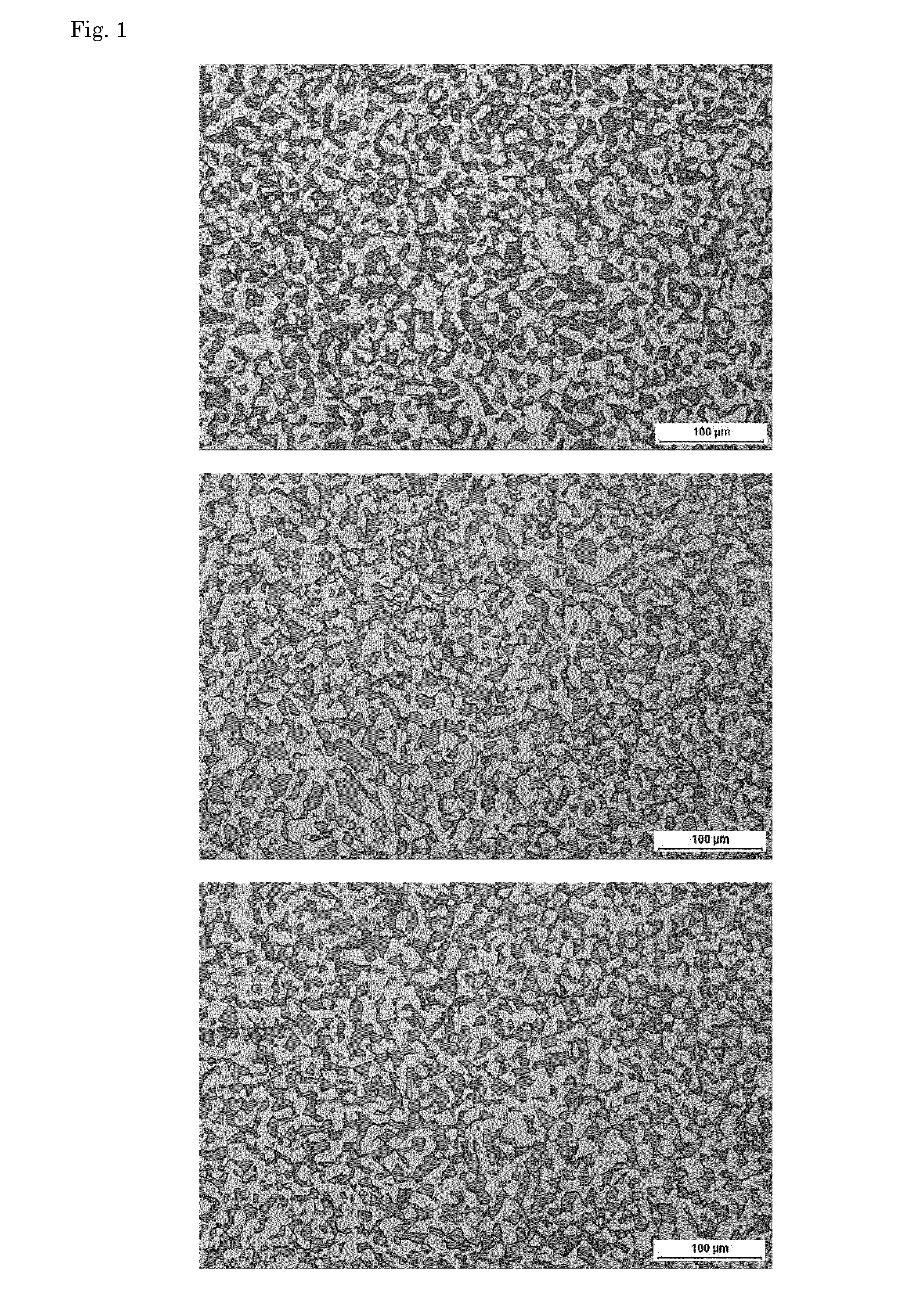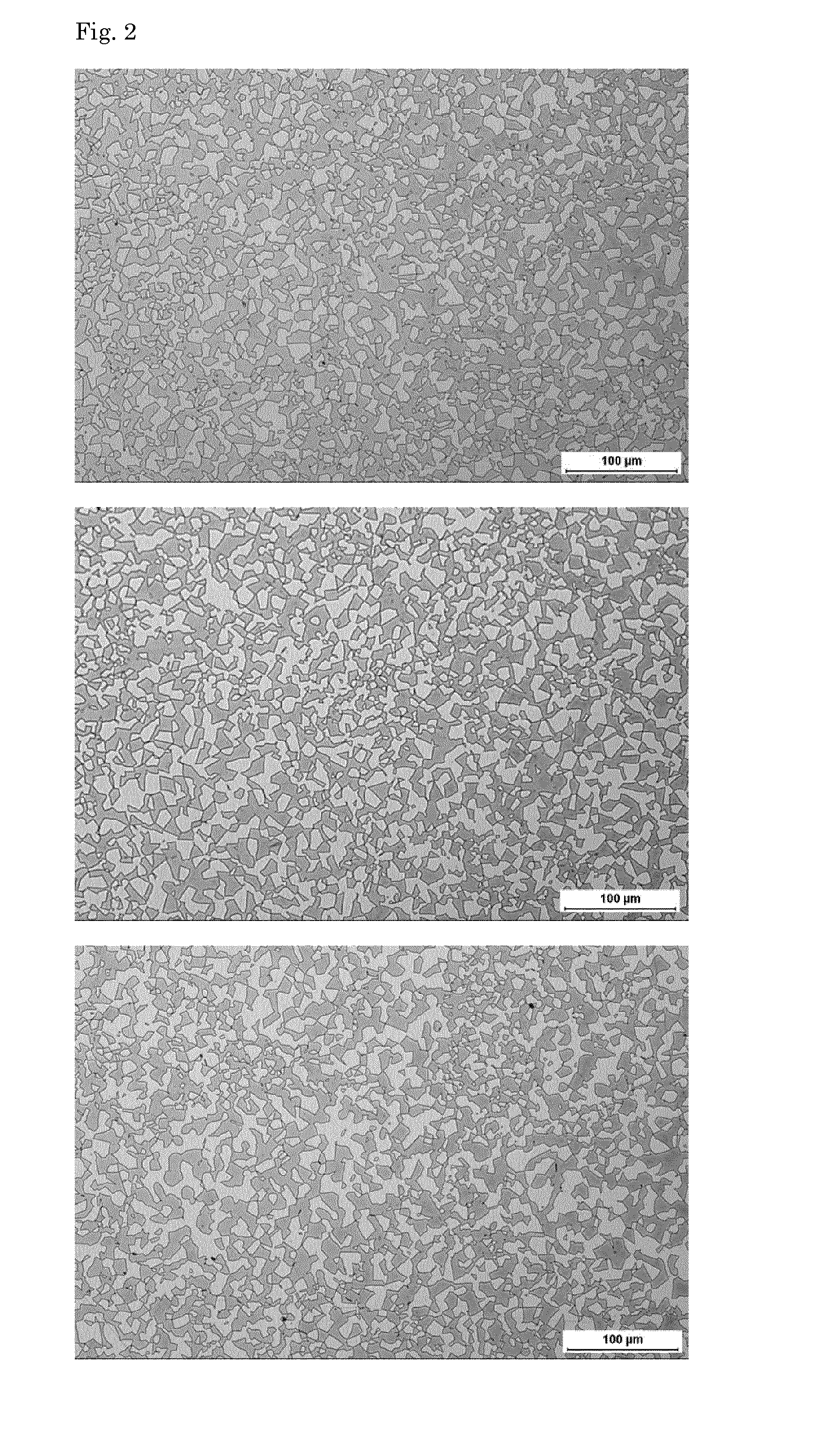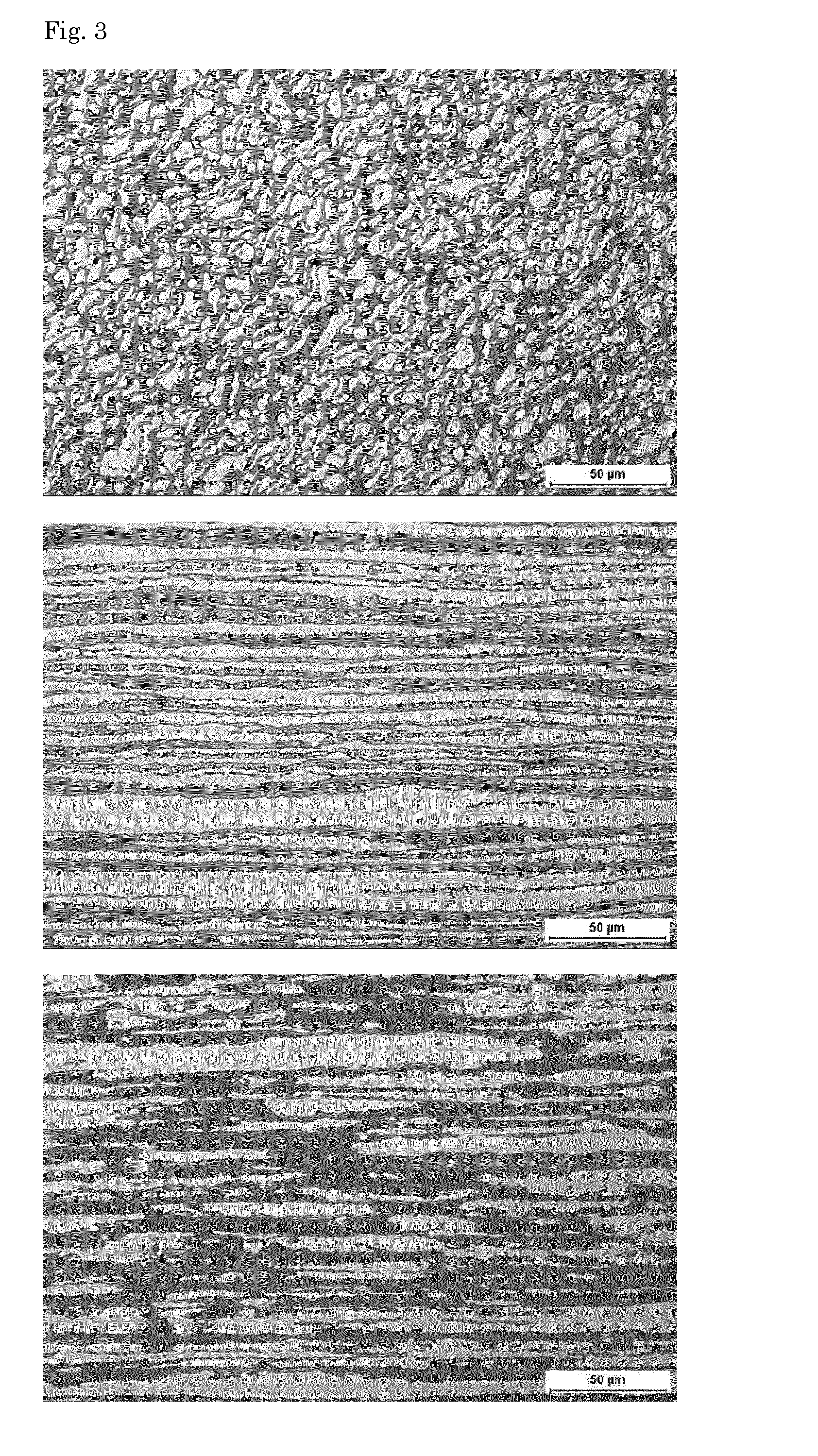Corrosion resistant duplex steel alloy, objects made thereof, and method of making the alloy
- Summary
- Abstract
- Description
- Claims
- Application Information
AI Technical Summary
Benefits of technology
Problems solved by technology
Method used
Image
Examples
example 1
[0203]In this Example, samples of ferritic-austenitic alloys are provided which have been produced by different production methods. The samples are subjected to an investigation of their microstructure.
[0204]Five samples were selected. Four samples were of the grade Safurex, and one additional was of the grade SAF 2507 (ex Sandvik) produced by the HIP method. A list of the samples can be seen in Table 1.
TABLE 1List of the samples used in the investigationSampleGradeProductProduction method1SAF 2507Bar ø 70 mmHIP2Safurex ®Bar ø 60 mmHIP3Safurex ®Tube 25 × 2.5 mmPilgered4Safurex ®Bar ø 120 mmRolled5Safurex ®Tube 37 × 6 mmExtruded
[0205]Metallographic specimens were prepared from the mentioned samples. The specimens were prepared according to ASTM E 3 -01 [1] (preparation method 2 for harder materials was used). Three sections were cut from each sample in different directions; transverse section, radial longitudinal section, and tangential longitudinal section according to the suggested...
example 2
[0226]Two test samples were provided of steel of grade Safurex®. The samples, representing a typical construction as used in liquid distributors, were half rings with three holes drilled in it.
[0227]Sample 2HIP was made by a HIP process in accordance with the invention. Sample 2REF was made conventionally by hot extrusion from a bar material, followed by cold pilgering to form a pipe.
[0228]The samples were subjected to a Streicher corrosion test. The Streicher test is known in the art as a standardized test for determining the corrosion resistance of a material (ASTM A262-02: Standard Practices for Detecting Susceptibility to Intergranular Attack in Austenitic Stainless Steels; practice B: Sulfate-Sulfuric Acid Test).
[0229]Subsequently, micro preparations were obtained from the samples. In these samples, the austenite spacing (according to DNV-RP-F112) and the austenite length / width ratio were determined in two directions perpendicular to each other. The latter is shown in FIG. 6. T...
example 3
[0239]Two samples were prepared as in Example 2.
[0240]Sample 3HIP was made by a HIP process in accordance with the invention. Sample 3REF was made conventionally by hot extrusion from a bar material, followed by cold pilgering to form a pipe.
[0241]The samples were subjected to conditions as typically encountered in urea production. Accordingly, the samples were submerged in a solution containing urea, carbon dioxide, water, ammonia, and ammonium carbamate. The conditions were as follows:
N / C ratio:2.9Temperature:210° C.Pressure:260BarExposure time:24HoursOxygen content:
[0242]Subsequently, micro preparations were obtained from the samples as in Example 2. In these samples, the austenite spacing (according to DNV-RP-F112) and the austenite length / width ratio were determined in two directions perpendicular to each other, again as shown in FIG. 6.
[0243]The results are given in Table 9 with reference to weight reduction and selective attack of the material. The HIPed material of the inven...
PUM
| Property | Measurement | Unit |
|---|---|---|
| Temperature | aaaaa | aaaaa |
| Length | aaaaa | aaaaa |
| Time | aaaaa | aaaaa |
Abstract
Description
Claims
Application Information
 Login to view more
Login to view more - R&D Engineer
- R&D Manager
- IP Professional
- Industry Leading Data Capabilities
- Powerful AI technology
- Patent DNA Extraction
Browse by: Latest US Patents, China's latest patents, Technical Efficacy Thesaurus, Application Domain, Technology Topic.
© 2024 PatSnap. All rights reserved.Legal|Privacy policy|Modern Slavery Act Transparency Statement|Sitemap



